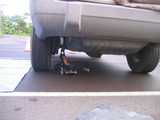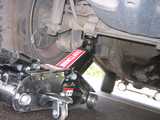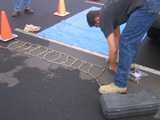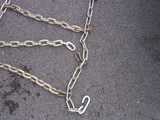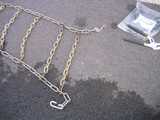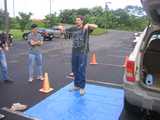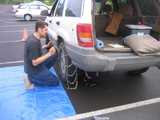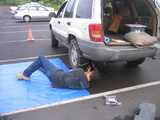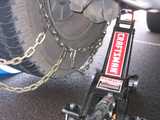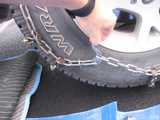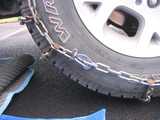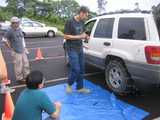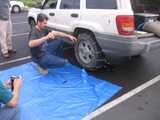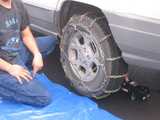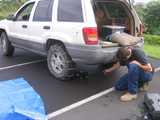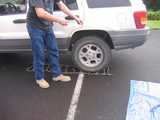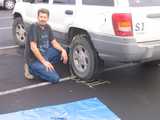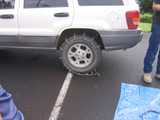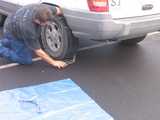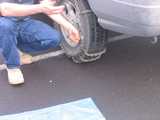Installing Snow Chains on SMA Jeeps
This page is an aid to help you install the chains on the SMA vehicles. If you are an observer, it is unlikely that you will ever need to do this, but if you are caught at the summit, this page is here to help. Hopefully you have taken Les' training course and this will just be a refresher.There is no reason for the observers to be at the summit under these sorts of bad conditions and they should evacuate the summit before the need to use chains arises.
Important Points:
- If you are going down the mountain, place the chains on the FRONT tires. If you are going up the mountain (a less likely scenario for observers) put the chains on the REAR tires. In heavy snow conditions, you will need to use chains on all 4 wheels. An extra set is available in the summit hangar.
- NEVER exceed 25 mph. The chains will cause EXTREME damage to the vehicle and possibly the brake lines.
- After applying the chains, stop and retighten them after a couple of hundred feet or so. You will not be able to install them tight enough on the first try.
- Installation of chains or cables on vehicles other than this Jeep is a very similar process.
- NEVER attempt to reach the summit in bad conditions without precise orders from the scheduler. Loosing a night of observations is not worth risking your life.
Click on any picture to enlarge it and enter "slideshow" mode.
The Tools:
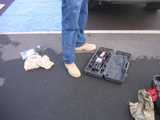
Jack, Chains (in cloth bag), Pliers, and Chain Tightener (in plastic bag). 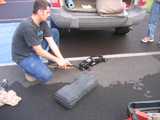
Remove the jack from the case and use the handle to turn the square nut to the right to put it into 'lift' mode.
The Jack:
Chain Inspection:
Chain Placement (using jacked car; see below if terrain prohibits using jack):
Chain Connection:
Chain Tensioners:
Finished! Lower Jeep:
ALTERNATE Chain Placement (without Jack):
